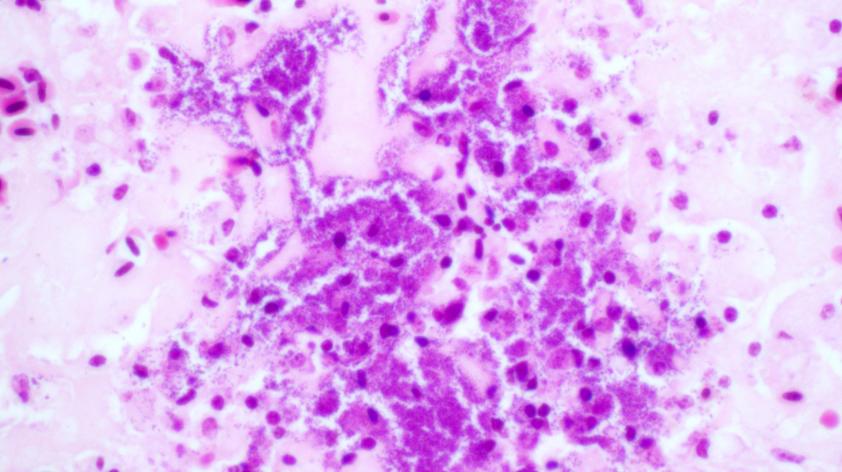
A Special “Special” Stain
One of the interesting duties working in Disease Investigations is helping the pathologists make a diagnosis on tissues by performing special stains on histologic sections. These stains go beyond the routine hematoxylin and eosin (H&E) stain to allow visualization of various disease processes, from identification of abnormal deposits to detection of infectious organisms to characterization of specific tissue components.
Special stains have the ability to highlight lesions within animals that are not visible on routine light microscopy. In some cases, these special stains also help to rule out diseases of concern. Our full time histotechnologist has taught me a few of the basic special stains to help out when she is away. Not only are special stains science at work, they are also an art!
One of the most popular stains requested by the pathologists is a Gram stain. Named after the Danish bacteriologist who developed it, the process as performed in our histology lab uses the MacCallum-Goodpasture method. It works very well given that identifying organisms in processed tissue sections presents additional challenges to this simple stain. Very dark purple Goodpasture’s solution, light yellow Picric Acid, brilliant purple Stirling’s Crystal Violet, and brassy orange Gram’s Iodine are applied in sequence to tissue sections.
Ultimately, due to differences in their cell walls, certain bacteria will be colored blue-purple, identifying them as Gram-positive, while others will be colored red-pink, identifying them as Gram-negative. Bacteria that may have been barely visible with a routine H&E stain can now be seen clearly and classified into one of these categories. When combined with the shape of the bacteria, e.g. coccoid, rod-shaped or filamentous, and perhaps bacterial culture, the pathologist can often identify the exact type of bacteria causing a disease.
Such a diagnosis is the start to understanding why an animal acquired this bacterial infection and how best to treat others that may also be affected.













